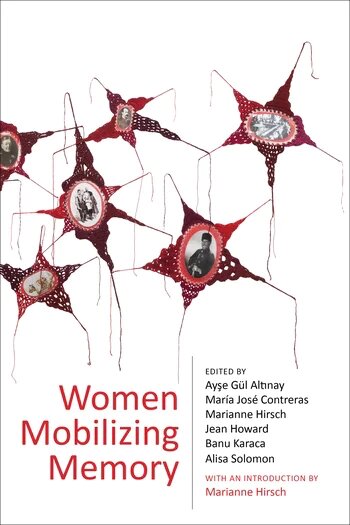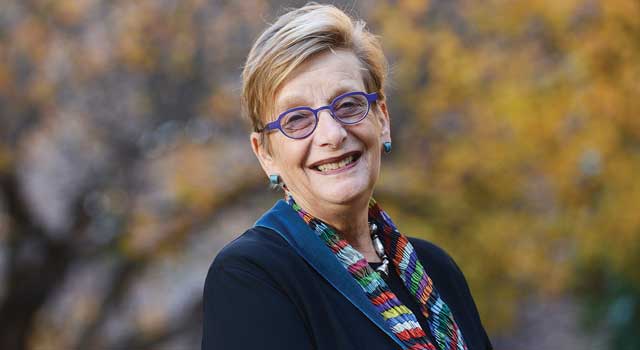Marianne Hirsch is William Peterfield Trent Professor of English and Comparative Literature at Columbia University and Professor in the Institute for Research on Women, Gender, and Sexuality. She is a member of the American Academy of Arts and Sciences and a former President of the Modern Language Association of America. Born in Romania and educated at Brown University, where she received her BA/MA and Ph.D. degrees. Hirsch’s work combines feminist theory with memory studies, particularly the transmission of memories of violence across generations. Along this interview, we talked about her academic trajectory and the concepts she coined, and also about interdisciplinarity, the relationship between memory and new technologies, and the transmission of trauma across generations, its role in the social movements (feminism, Black Lives Matter…) and its possible uses to strengthen democracy.
One of the main themes of the current issue of Observing Memories is the relationship between the new technologies and social networks in the transmission of memory. While it’s been said that Twitter may one day become an indispensable source of analysis in the study of political thought, what new contributions can it and other social networks make to our study of the transmission of memory? Can social networks help us to counter hegemonic narratives of the past or is there a danger of them actually bolstering these narratives?
This is a great question. Social networks are just that – networks – webs of transmission that intersect and overlap. Memory also circulates through webs and networks, as different groups define themselves and their identities according to certain understandings of the past, understandings that can conflict with those of other groups. When versions of the recollected past are built and circulate through social media, they are supported by the likes and dislikes, the agreements and disagreements that these platforms enable. I believe that this process is ideologically neutral: it can be used by different groups for their own benefit. And, as we now know too well, a lot of falsehood can circulate in social media, affecting the present that is built upon these versions of the past.
But social networks do more and do good as well: they generate informal archives that contribute to the formation of memory and the writing of history. As people scan, upload and exchange images and documents held in private and family collections, as they contribute individual and communal stories and anecdotes, they supplement official archives and preserve small stories that might otherwise be left out of the historical record. I’ve had some wonderful help finding images and documents from people interested in some of the obscure towns, ghettos and camps I was researching. Such crowdsourced archives have become invaluable in enlarging, deepening and materializing official histories.
After beginning your career in the field of comparative literature and feminist theory, your work has also become a benchmark for scholarship in memory studies. You’ve always defended the importance of interdisciplinarity when dealing with the past. Over the years, what challenges have been involved in pursuing and reconciling the many disciplines that comprise memory studies?
Interdisciplinarity is both what attracted me to memory as a field of study, and what I feel I need to learn about the workings of personal and cultural memory. The opportunities for interdisciplinary and transnational collaboration are especially exciting. To understand how the past is transmitted and how it shapes the present and future, I’ve had to read and be in conversation with colleagues from history, anthropology, political science, literature, the arts, architecture, law, human rights, psychology, psychoanalysis, neuroscience and more. Memory studies is one of the most interdisciplinary fields in the Humanities and Social Sciences. And, in addition, the study of memory is intimately tied to practice. The working groups in which I have been involved over the years include not only scholars and artists, but also practitioners – archivists, curators, memory activists of many kinds. But, as your question suggests, these conversations and collaborations are not always easy.
Some historians, for example, resist the authority of individual recollection and discount it as evidence. Other memory scholars respond that individual ordinary stories are essential if we want to understand the intimate dimensions of a traumatic past, how it is lived, and how it is recorded beyond official records. In another example, when neuroscientists discuss the epigenetic inheritance of trauma, their research is based on minute studies of rat brains and behaviors. But those of us in the humanities may be too quick to see our own assumptions about the bodily and psychic aftereffects of trauma confirmed by this research. It will take years to find the neuroscientific evidence we seek.
Very different assumptions undergird each of these fields and it often takes a while to see that we might not even mean the same thing at all when we use basic terms like “memory.” That may be why we are all qualifying, defining and redefining our terms, why we keep adding prefixes and suffixes. But, importantly we are also drawing on each other’s work across disciplines in quite unprecedented ways and this cross-fertilization promises to make memory studies not so much interdisciplinary as trans- or even post-disciplinary. Beyond that, the transnational networks and collaborations that have defined the field also affect its disciplinary and interdisciplinary formations. Fields like anthropology and sociology, for example, have different inflections in Europe than they do in the United States, gender studies move in different directions, and so on.
And feminist, anti-racist and decolonial commitments that have been central for memory studies are also differently shaped in different locations. I am excited by the efforts of younger scholars to “decolonize” memory studies thus enabling it to build on the progressive commitment to social justice in a global perspective that so many involved in this field share.
You first coined the term “postmemory” in an article on Art Spiegelman’s Maus in the early 1990s, and since then you and many other scholars have gone on defining and refining it. After almost thirty years, how has the importance of postmemory changed? How useful has the term been and what uses has it been put to?
Yes, the idea of “postmemory” emerged for me from my own experience as a child of parents who survived persecution and ghettoization as Jews during the Second World War in Nazi Europe. I needed a term for my relationship to the memories my parents transmitted to me which, at times, felt like my own memories – they were so much more vivid and powerful than my own childhood recollections. But, of course, they were not my own. These experiences that shaped me so profoundly occurred before I was born. Art Spiegelman found a form through which to express the complex relationship the second and subsequent “postgenerations” have to the traumatic histories they have inherited – the simultaneous identification and disidentification, the curiosity and need, the desire and envy, and also the fear, rejection and abjection of that past.
I’ve been surprised at the widespread use the term has enjoyed and I’ve learned a great deal from the ways in which it has informed work on the transgenerational memory of slavery, dictatorship, authoritarianism, torture and terror, partition, and more recent wars and genocides. I suspect that these multiple uses are enabled by the fact that my initial conceptualization of postmemory was quite capacious, leaving me to refine and tighten it over many years in different publications, as you observe. If it was, and still is, a work in progress, however, it is due not so much to my rush to publish an unfinished argument, but to the many conversations in this burgeoning field that I’ve been fortunate to join, and to the inspiring work on the memory of painful pasts done by scholars, artists and activists across the globe.
What I call a “structure” of intergenerational transmission is not in any way limited to the Holocaust but describes the experiences of, and the aesthetic forms used by, what Eva Hoffman called the “postgenerations” of many other traumatic histories. But each of these histories also has particular dimensions and working across them has changed my understanding of each one. To name just a couple of examples, speaking with child survivors of the Rwandan genocide interested in postmemory out of concern about how the trauma they are passing down will affect their children and grandchildren provoked me to think about what our Holocaust survivor parents might have done differently. Focusing on the afterlives of apartheid in South Africa and the lack of economic reparations for its victims has enabled me to see how important geopolitical and economic factors are in the shapes that postmemory takes in sites of continued poverty and inequality.
The critiques of postmemory have also been instructive and have helped refine my understanding of contextual differences in intergenerational transmission. Postmemory has been a common but also hotly debated reference point for the postgenerations of the Latin American dictatorships. Is it too much focused on the past, rather than the future, some scholars have asked? Too geared to trauma rather than the political ideals of the victims of political disappearance? And does not the absence of the disappeared parents make their children themselves the victims, thus complicating the numbering of generations?
But scholars of the Holocaust have criticized my initial conceptions as well. While I had been eager to underscore the mediated qualities of memory and postmemory and thus to minimize their biographical and familial locations, enlarging the circuits of transmission beyond family, children of survivors quickly pointed out that their own experiences were particular to the familial context. In response, and with their help, I worked to distinguish between “familial” and “affiliative” postmemory. This has been a crucial elaboration that enabled other thoughts as well, about how our acts of contemporary witness of distant contemporary catastrophic events might be structurally similar to intergenerational postmemory. We experience these events at a distance, often unable to intervene, and we ask ourselves what our responsibility might be to address or redress wrongs that we are not ourselves suffering, or responsible for, but that affect us profoundly. This practice of co-witnessing, in the terms of Irene Kacandes, is something I’ve been thinking about a great deal, especially during this spring and summer of trauma and social distance.
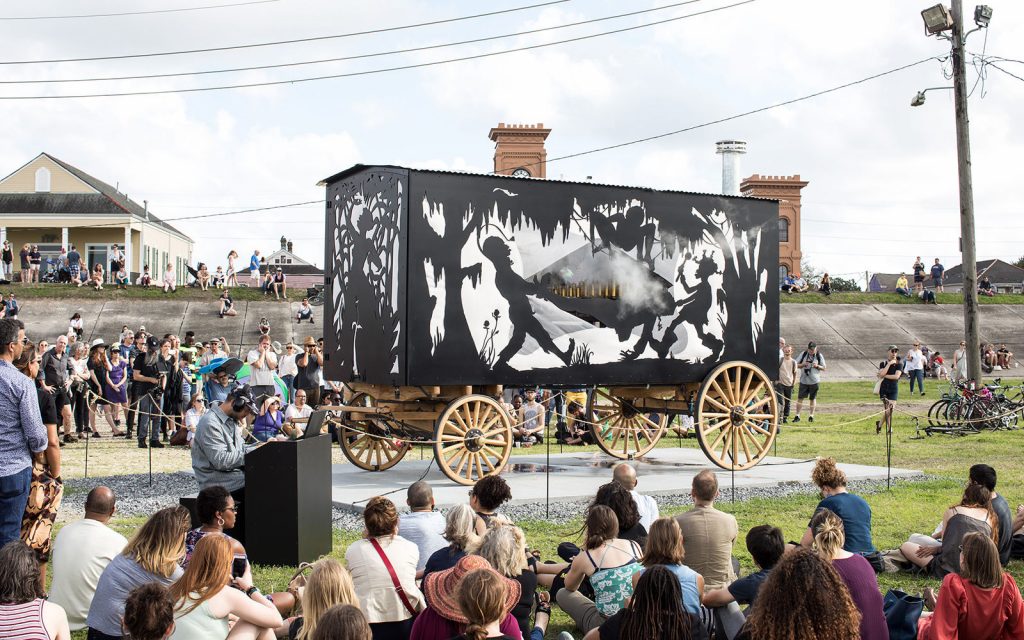
During the last years you have been working in other concepts, like “mobile memory” or “stateless memory”. Could you please tell us what do they mean?
During this last decade, I’ve been struck over and over by the discrepancy between scholarly discussions in memory studies and public memory projects in different parts of the globe. Scholars of memory have worked to move beyond the nationcentered beginning of the field in the work of Pierre Nora and others, and to reconceive memory as transnational and transcultural, building on the assumptions that memory moves in and across various networks of exchange and that nations are neither static nor clearly circumscribed but in constant active contact with one another. In contrast, recently opened public memory institutions and recent commemorations have become more and more monumental, supporting nationalist and ethnocentric imaginaries. I’m thinking here of recent memorials and memory museums like the Memorial to the Victims of German Occupation in Budapest, for example, or the September 11 Memorial Museum in New York, as well as monumental nationalistic commemorations of the First World War, D- Day, the 1967 War, the Easter Rising in Ireland and so many others.
I’ve written about mobile memory and stateless memory in an effort, precisely, to contest these renewed ethnocentric, monumental and masculinist memory practices and institutions, and to recover some of the critical potential of the field which, in its earlier formations, was inspired by the idea of “counter-memory” and by counter-memorials – in the work of memorial artists like Maya Lin, Horst Hoheisel or Renate Stih and Frieder Schnock, for example.
In dialogue with work on transnational, transcultural, cosmopolitan, multidirectional, diasporic conceptions of memory, I have explored memory’s mobility and thought about how it can be aesthetically, and, indeed, museologically figured. Through what media, what forms of presence and action, what aesthetic strategies, circuits and itineraries can memories be transmitted beyond the confines of national frames, challenging rather than reinscribing singular histories and nationalist imaginaries? How can they do so while still doing justice to their rootedness in the local and the historically particular? What specific theories of memory might best be attuned to memory’s politics, seeking out and identifying counter nationalist and counter-identitarian strategies? I have focused on memory’s mobility by highlighting memory projects and artistic works that are small and anti-monumental and that cross borders. I’ve been especially inspired by the wonderful work of women artists like Mirta Kupferminc, Silvina der Merguerditchian, Doris Salcedo, Yin Xiuzhen, Wangechi Mutu, Kara Walker, to name just a few examples.
I’ve thought about stateless memory, more specifically, in response to the current global refugee crisis and the increasingly impermeable borders of nation-states. Building on Hannah Arendt’s reflections on statelessness during and after the Second World War, I’ve spoken and written about stateless memory, specifically, because I see memory studies as a fruitful site in which to think beyond the bounds of citizenship as delimited by the nation-state. I do this again in dialogue with artists who show us how we think of statelessness not just as a condition of victimhood and abjection. Even as we know that stateless people are subject to nation-states for rights, we can still attempt to imagine ways of being in the liminal interstices between and beyond national borders. I see stateless memory as a pause or suspension in both the aspiration to citizenship and in the performance of mobility and migration, whether chosen or imposed. In the pause that is statelessness, I hope to allow for the imagining of alternative potential relationships between contemporary subjects and citizenship, national belonging, and home.
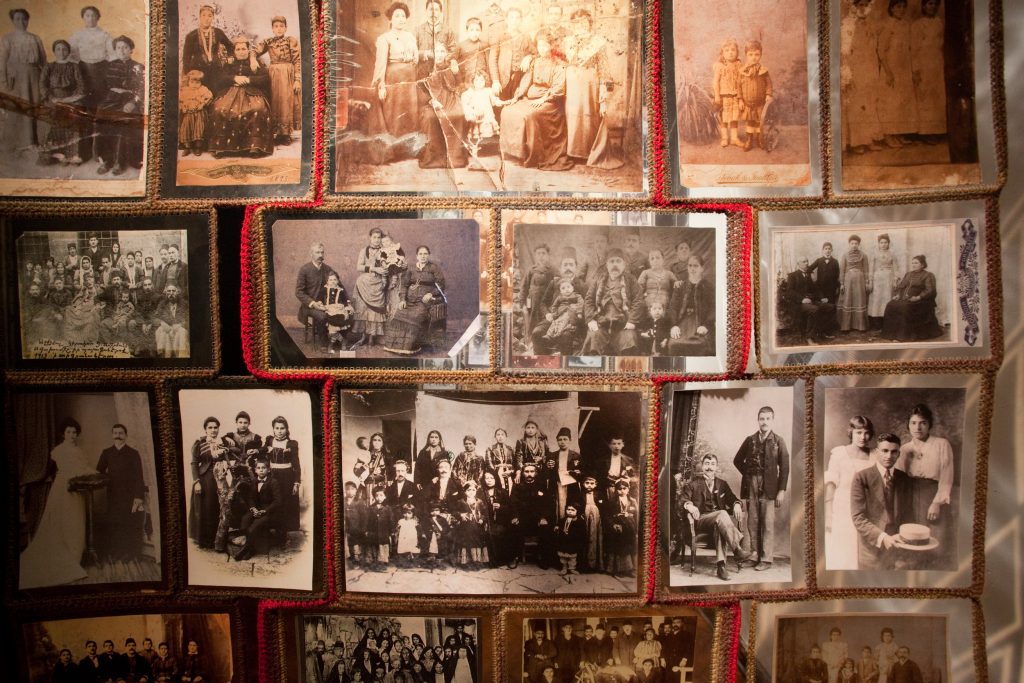
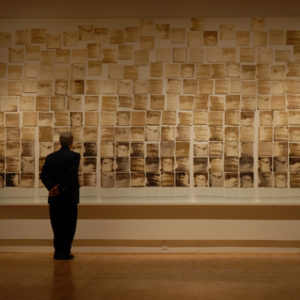
Holocaust studies have been particularly present in research on the transmission of trauma across generations. Do you think this has affected the study of other cases of memory transmission, leaving aside memories of resistance, militancy and activism? Has it overshadowed other types of response to historical traumas?
Thank you for this challenging question. This is something I’ve been thinking about a great deal. Because of the dedicated work Jewish victims did to document and testify about their experiences of persecution and murder, and because of the urgency descendants and scholars of the Holocaust began to feel in the 1980’s and 1990’s about the impending death of survivors and eyewitnesses, this event has spawned a vast array of historical and theoretical work on memory and trauma. That remarkable and authoritative work has informed analyses of other instances of historical trauma, for the most part in helpful ways that show structural connections and interrelations as well as divergences and specificities that resist any possible conflation of these histories. Certain kinds of racialized persecution – against Jews, Blacks, indigenous peoples – can fruitfully be connected by studying the structures of Euro-American imperialism and colonialism and the internal and external “others” they have created. Responses by those suffering resulting ethnocentrisms and racisms also follow some connected strategies – assimilation and aspired integration, on the one hand, resistance, refusal, and celebration of difference, on the other.
The Holocaust itself is not a uniform event, of course. It comprises so many different kinds of experiences – ghettoization, deportation to forced labor, concentration or death camps, refugeehood, hiding, passing, murder. Yet in popular discourse, the term has come to mean, simply, Auschwitz and numbers on a forearm. This kind of reduction might be inevitable over decades, but it does not foster a productive kind of memory politics. The real problem arises when one event, like the Holocaust conceived in this narrow way, is represented as a limit case and when it becomes a template against which other cases of trauma and survival are measured.
If descendants of persecuted and murdered political activists remember partisans fighting in the Spanish Civil War, anti-apartheid activists in South Africa, victims of forced disappearance in Latin America, Turkey and elsewhere, dissidents in Soviet bloc regimes, to name just a few examples, refer to the Holocaust as a paradigmatic case of persecution and murder, the political work and the passions, hopes and aspirations that made their ancestors vulnerable would indeed be obscured. I have found that looking at memory connectivity, across these histories, is especially helpful in moving beyond the focus on traumatic recall and return, to the memory of activism, resistance and hope. What future were our subjects envisioning? How can we avoid backshadowing, that is, seeing them only through the knowledge of what later happened, rather than granting them the future they were imagining in the past?
I have been very interested in thinking about how the memory of violent pasts can be mobilized in the interest of a better future, and thus the memory of activism and activist movements is especially important. I’m inspired by my colleagues who participated in the project on Women Mobilizing Memory, and by the work that Ann Rigney and her group, as well as Yifat Guttman and Jenny Wüstenberg and their collaborators are doing on memory activism.
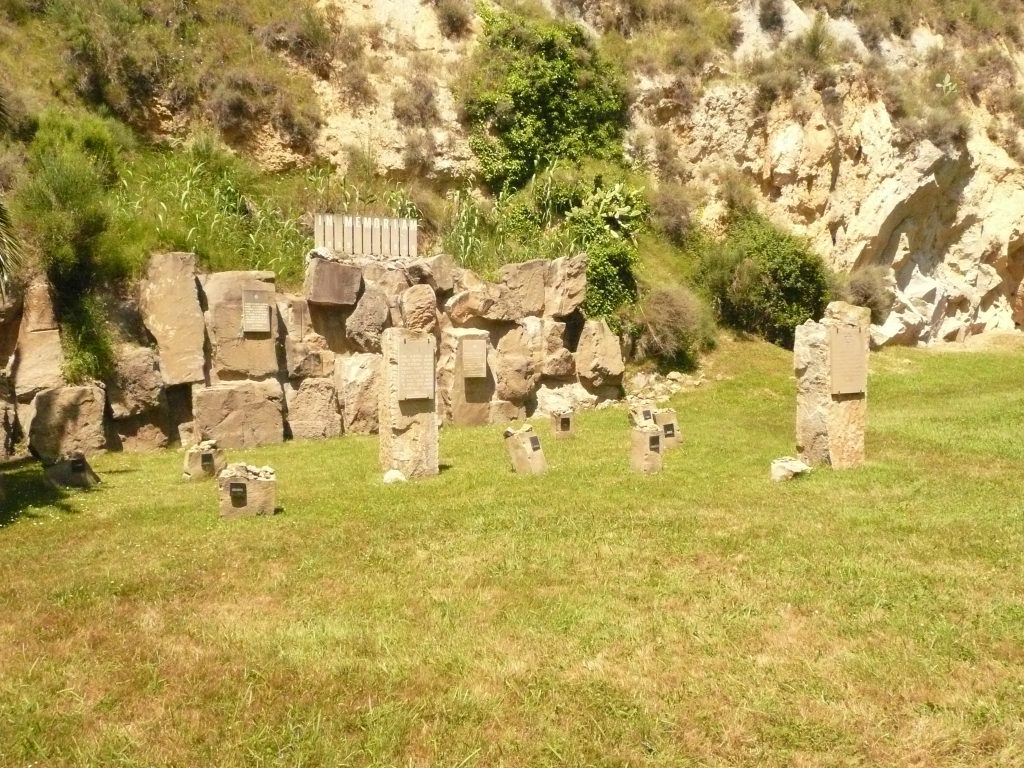
In recent years the feminist movement has gained ground, flexing its muscles every 8th of March in the form of mass demonstrations in capital cities across the world, campaigns against violence against women and girls, protest initiatives like the Me Too Movement and public performance pieces like “The rapist is you”. What role has memory played in advancing the movement? What role can it play?
Memory is crucial in these movements. The memory of gender violence and women’s and gender nonconforming people’s vulnerability to gendered persecution are transmitted and inherited across generations, viscerally and materially, as well as psychologically. The philosopher Susan Brison even argued that women have an embodied postmemory of rape. And they also have postmemories of how generations preceding them have both accommodated to and resisted, even refused, compulsory heteronormativity and subordination.
Recent feminist demonstrations and demands for equity and recognition on behalf of women and LGBTQI populations follow on a long tradition of organized struggles against misogynistic and homophobic bias and violence –connecting to long histories of anti-racist struggles as well. Memory is important here as well. We have so much to learn from the tactics of emancipation, suffrage, abortion rights, labor and so many other movements of the past. These activist memories and memories of activism are instrumental in shaping these new movements, both inspiring them by example and showing up past shortcomings. I hope that my generation has been able to transmit our passionate hopes and struggles for change, even as we need to recognize that these battles still have to be fought time and again.
Of course, every generation also needs to find its own way. As someone who came to feminism in the 1970’s, I am acutely aware of some of the mistakes my generation made, but also of some of our bold tactics and generative analyses, some of which have been forgotten, critiqued and superseded by younger generations. But I am also seeing transgenerational and transnational continuities in the demands for rights and recognition among feminists and the renewed energies that protests against sexist and homophobic violence and harassment are enjoying right now.
As we speak, Black Lives Matter is gathering momentum in cities across the US in the wake of the murder of George Floyd by a Minneapolis police officer. You’ve spoken about how Toni Morrison’s novel Beloved affected you in its description of the transmission of the memory of slavery and, right now, confederate monuments across the States have become a flashpoint in protests against racism. What weight does the memory of slavery have in these expressions of social indignation caused by discrimination against black people?
The protest against anti-Black racism in the United States and across the globe do not just reference the memory of slavery but its continued consequences and after-effects in both Black and white communities. The line between enslavement, the period of Reconstruction during which former slaves were first granted rights and then cheated out of the benefits promised by abolition, the racist separations and persecutions of the Jim Crow era and current social and economic and social inequalities in the United States is continuous. How can we separate the memory of slavery from these present conditions? Don’t we need to think them together, carefully analyzing how one is compounding the other?
The monumental disparities in the death rates of Blacks and other people or color from the Coronavirus show us how these inequalities have created insurmountable social vulnerabilities. So while the Confederate statues that are still standing in many US cities testify to the fact that this country has not yet worked through the crimes of enslavement and its aftermath, the tremendous inequalities in income, health care, educational opportunities, incarceration, etc. show us some of the concrete forms of repair and reparation that need to be accomplished along with and beyond memory work.
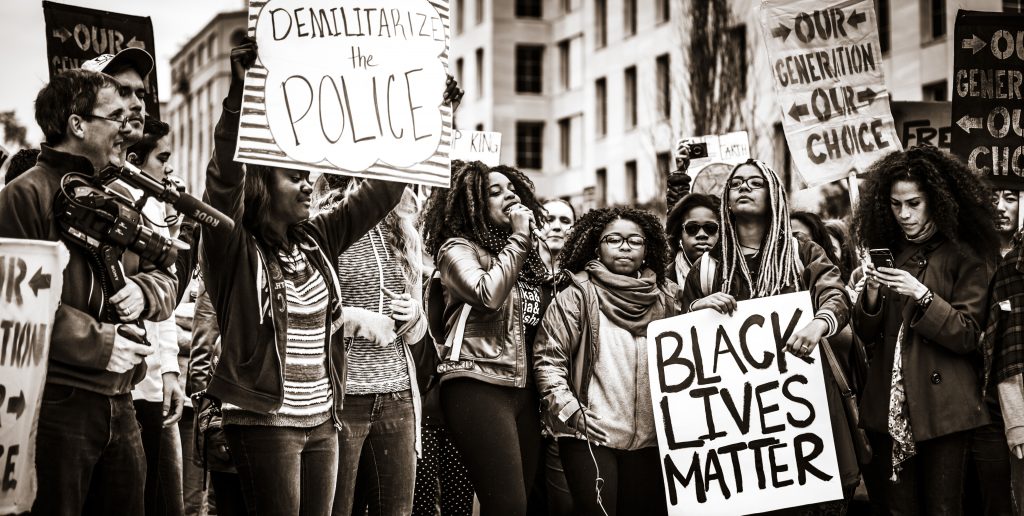
Memory is regularly called upon to provide an antidote to undemocratic movements, but although we’ve seen a major increase in memory studies, we’re also witnessing rising levels of political authoritarianism and a new outbreak of far right-wing sentiment that jeopardises democratic systems in different countries. Can memory serve to strengthen democracy? If it can, why haven’t we been able to use it to do this? And how might it still be used to slow the expansion and growth of the far right?
This is a really important question for those of us engaged in this field out of a commitment to social justice and a democratic future. We have to acknowledge that memory serves right-wing authoritarian causes as much as it does progressive ones. Authoritarian regimes often invoke, or create, “memories” of perceived injuries in the past to shape group identities and to mobilize populations around shared “wounds.”
But, yes, memory can indeed strengthen democracy. It can do so if it means coming to terms with and attempting to repair past injustice. If it means acknowledging how past injustices benefit some populations in the present – as, for example, the economies of enslavement benefit whites in the United States even if they arrived here generations after abolition. If it means being aware of how we are implicated in these continuities and working to foster a radical form of equality and justice in the present. Memory alone cannot do that – it must inspire a practice of activist engagement. But such a practice also cannot thrive without memory and historical knowledge.
